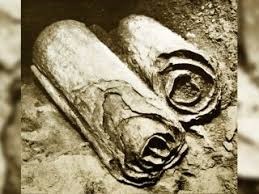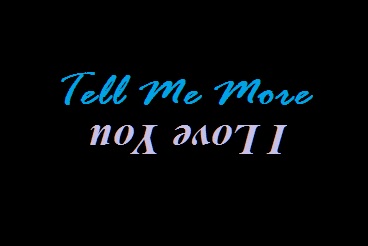Ancient Fan Fic?
By Anthony Casperson
8-17-19
About a week ago, I was spending some time with my dad watching a show about the Dead Sea scrolls. During the episode, a museum curator spoke with the host about the scrolls found that were not copies of the Old Testament. (While preserving the Hebrew bible was one purpose of those keeping the scrolls in ancient times, there was much more that they were interested in keeping written down.)
The curator gained one of those conspiratorial stances, as if he were revealing information certain people didn’t want the common person to know, while he spoke of the “apocryphal” writings. (I’d argue that those scrolls are not really apocryphal, but I get ahead of myself.)
This tonal stance about apocrypha is what many people take when they speak of the writings. A quick definition from a person who calls themselves an expert will reveal that apocrypha has a definition of “hidden” or “hidden away.” And then they start to question why they were hidden away until the people get into crazy conspiracy theory mode.
At this point in watching the show, I turned to my dad and shook my head. I wished someone, whose primary goal wasn’t to question the authenticity of the bible, could take the time to explain these writings to people. And then I realized that I have a platform from which I can do just that. So, here we go.
To understand apocryphal writings, we have to do two things first. One, forget about the Dead Sea scrolls for the moment. And two, understand the place of the synagogue during the centuries just before and after the time God dwelt among humanity in human flesh.
Synagogues during the centuries of the late B.C. and early A. D. were not just buildings that Jewish individuals went to worship God one day a week. They were the central location of cultural life for the Jews in the vicinity. Synagogues were places of worship, but they were also a place for town meetings, a library, a school, and much more.
Scrolls of all kinds were collected in the synagogue, both those which God’s chosen people considered to be inspired and co-written by God, as well as those which they knew to not be inspired. These latter writings held some educational or artistic value and could be useful for teaching people the history of Israel after the writing of the Hebrew bible had finished, or to learn how to read various types of literature.
But where would they keep these scrolls so that they didn’t get ruined? Well, that’s where we get to an interesting thing about the architecture of these ancient synagogues. They were designed to resemble the Temple in Jerusalem. Since the beginnings of the synagogue were found in the period of time after Solomon’s Temple had been destroyed by Babylon, this was a reminder of God’s presence among his people.
This design meant that there was a section of building curtained off from the rest, in order to represent the Holy of Holies (the Most Holy Place where the Ark of the Covenant was kept in the Temple). But since the synagogues were just representations of the Temple, there was no restriction of only one person entering that area once a year. So, it was a perfect solution to store objects in that area behind the curtain that only certain officials could get into.
And this curtained-off room is where they kept the scrolls…all of them. When they needed a specific scroll to educate young children, they could go back there and get any scroll that held what they needed. Both the inspired and the apocryphal could be brought out. There was no conspiracy. No holding back. Little children were allowed to read these writings.
But then why are they called apocryphal? The answer is simple. The synagogue leaders wanted only the inspired scrolls to be read during the time of worship (because they understood the difference between inspired canon and the recordings not written along with God’s guiding hand). The other various writings contained behind the curtained wall were hidden away for that time of worship.
The “hidden away” time was merely during the gathered worship of God’s people because they understood there was a difference in the writings. The rest of the time, those scrolls could be brought out for all to see. (The fact that the writings of the Dead Sea scrolls were not hidden behind a curtain is why I question the use of apocrypha while describing them.)
There’s no hidden knowledge that needs to be unearthed for truth to come out. These recordings are just different kinds of writings. Sure, one could enjoy the other writings right alongside the canon of inspired truth, but there is a difference.
While thinking about an image to help us understand this better, I thought about fan fiction. For those who don’t know, fan fic finds its place among people who really enjoy specific TV shows, books, movies, etc. They appreciate the canon of the story, but want it to expand beyond the finite limits it contains.
And so, these fans take it upon themselves to write stories about the same characters or the same setting, but formulate situations that the original authors would never write. These recordings can be found all over the internet if one really tries (which I don’t recommend without warning). Some fan fic can be well-written and incorporate many of the same themes, but there are many others that go off the deep end in regards to remaining close to the canon of the story.
Fellow fans can enjoy fan fiction, but we understand that there’s a difference between the writing of the original author and the fan fic. We would never go to an event where the author of the story is going to read an excerpt from their book and ask them to read this fan fic instead. It can be read and enjoyed, but that which is canon to the story is held in a different perspective.
The same is true of the writings of God. Those apocryphal books should never be held to the same level as the writings of the original author that his fans tried to emulate. And if we try to build our theology off of the apocryphal writings, then we’re basically making fan fic into canon. And trust me, no one really wants that.




